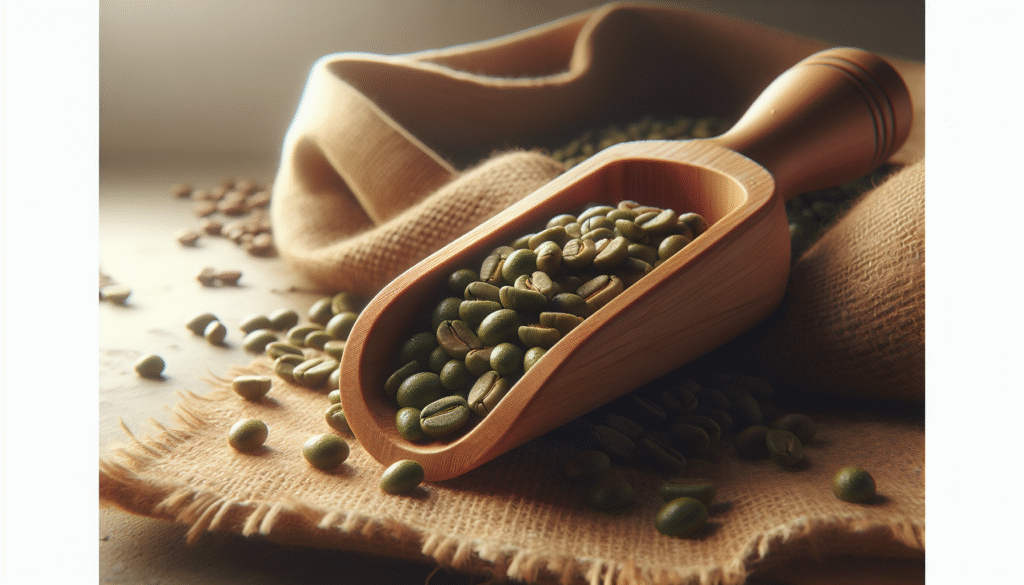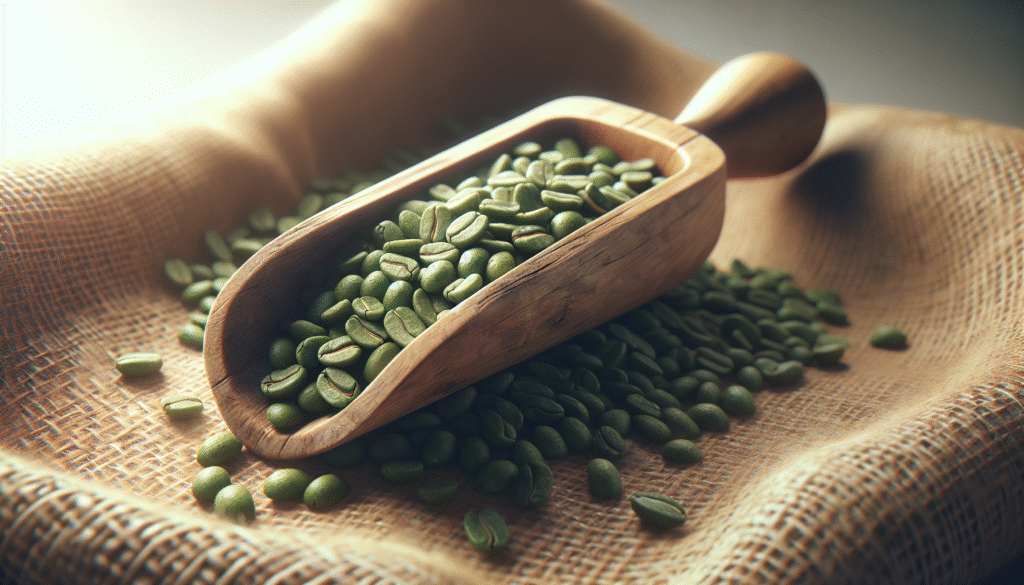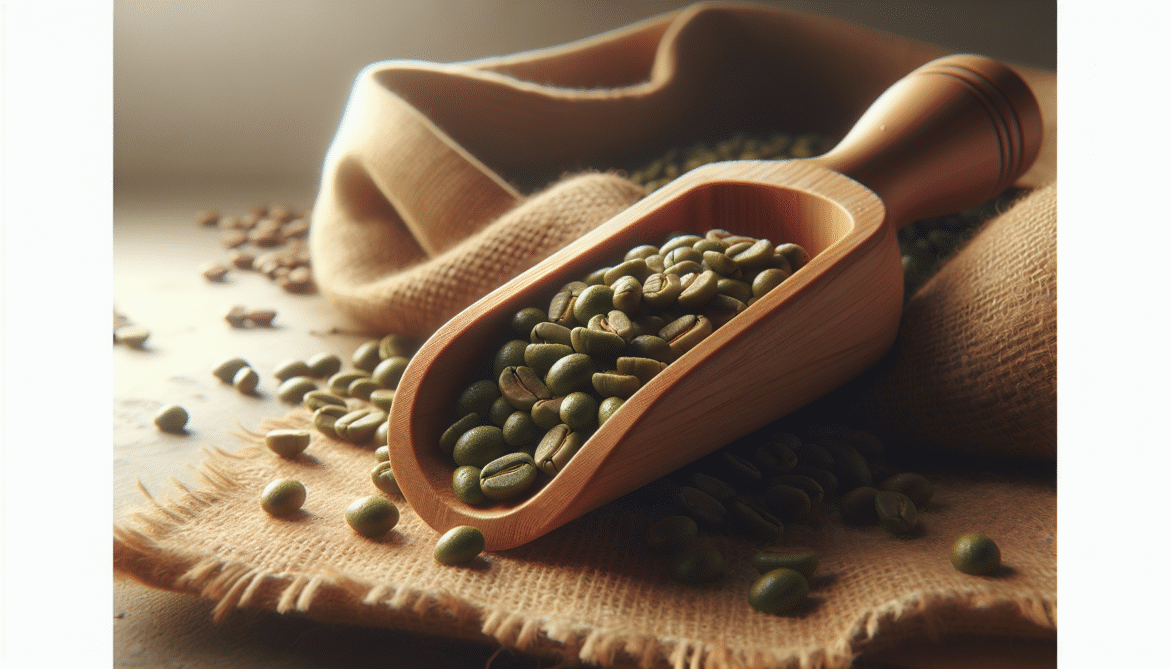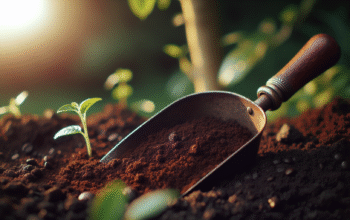Are you looking for high-quality organic coffee seeds to start your own coffee garden or to expand your small farm?
Organic Coffee Seeds for Sale
You can find organic coffee seeds for sale from specialized nurseries, smallholder cooperatives, and certified seed suppliers that prioritize sustainable practices. Choosing organic seeds helps you establish a healthy, chemical-free crop and supports soil and environmental health from the very first seed.
What people mean by “coffee seeds”
When people say “coffee seeds,” they most often mean the live seeds inside the coffee cherry that you can plant to grow new coffee plants. Sometimes sellers use the term to mean green (unroasted) coffee beans sold for roasting, so you should confirm whether the product is intended for planting or for consumption.
Why choose organic seeds
You will benefit from organic seeds because they are produced and handled without synthetic pesticides, herbicides, or fertilizers, reducing chemical residues and improving long-term soil health. Organic seed production also tends to preserve genetic diversity and supports farming systems that are more resilient and wildlife-friendly.
Types of Coffee Seeds and Varieties
Knowing the differences among coffee species and varieties helps you select seeds suitable for your climate, elevation, and market goals. The two main cultivated species are Coffea arabica (Arabica) and Coffea canephora (Robusta), each with distinct traits.
Arabica (Coffea arabica)
Arabica seeds come from plants that generally prefer higher elevations, milder temperatures, and shaded conditions, producing higher-quality cup profiles. If you aim for specialty coffee markets, Arabica is usually the preferred choice because of its greater flavor complexity and higher market value.
Robusta (Coffea canephora)
Robusta seeds produce plants that are hardier, more productive, and more resistant to pests, diseases, and heat, though they typically yield a stronger, more bitter cup. You should consider Robusta if you have lower-elevation land, limited shade, or need higher yields and disease resistance.
Popular Arabica cultivars and hybrids
There are many named Arabica cultivars and hybrids, such as Bourbon, Typica, Caturra, Catuai, SL28, Gesha, and Castillo, each with unique flavor notes and agronomic traits. Choosing a cultivar depends on your altitude, rainfall, disease pressure, and whether you want high cup quality or higher productivity.
Selecting cultivars for organic systems
You should prioritize disease-resistant and locally adapted cultivars for organic management because you will rely more on cultural and biological controls than on synthetic chemicals. Look for varieties bred for resistance to coffee leaf rust (Hemileia vastatrix) and nematodes, or those known to thrive under shade and with organic nutrient regimes.
Where to Buy Organic Coffee Seeds
Buying from reputable sources ensures you receive viable, certified, and correctly labeled seeds that match your project needs. You can purchase seeds from local nurseries, online seed suppliers, farmer cooperatives, and research institutions, but you should verify organic certification and germination guarantees.
Local nurseries and cooperatives
You will often find local nurseries and cooperatives that sell organic seeds or seedlings adapted to your region, and buying locally can reduce shipping stress on seeds and help you get region-appropriate advice. Local suppliers may also offer seedlings rather than raw seeds, which can be advantageous if you prefer a head start in plant establishment.
Online suppliers and seed banks
Online suppliers provide access to a broader range of varieties and certified organic seeds, and many reputable companies will ship seeds with clear labeling and germination rates. When buying online, you should check shipping conditions, phytosanitary certificates, and customer reviews to avoid poor-quality or mislabeled seed lots.
Research stations and breeding programs
You can obtain advanced or experimental lines from research stations or university breeding programs, often with detailed agronomic data and guidance. These sources may be especially valuable if you want disease-resistant or specialty cultivars, but you should verify availability and legal restrictions on distribution.
What to verify before purchasing
Confirm germination rate, seed age, provenance, organic certification, and seller reputation before you finalize a purchase, because seed quality has a direct impact on establishment success. Also check quarantine and phytosanitary requirements if you are ordering across borders to avoid legal issues or seed loss in transit.
Organic Certification and Legal Considerations
Understanding organic certification and seed regulations helps you buy legally and maintain your organic status if you plan to certify your farm. Certification bodies like USDA Organic, EU Organic, and other national systems have rules about input origins, documentation, and recordkeeping.
Certification of seeds and seedlings
Seeds labeled as organic must meet the standards of an accredited certification body and be traceable to organic production and handling systems, so you should ask for certification documentation. If you are buying seedlings, ensure they were raised on certified organic media and managed in compliance with organic standards to avoid contamination.
Phytosanitary requirements and import rules
If you are importing seeds, you must comply with the phytosanitary and import rules of your country, which may require inspection, permits, and quarantine measures to prevent pest introductions. You should contact your national plant protection organization or customs authority to confirm necessary paperwork and inspection procedures.
Intellectual property and plant variety protection
Some cultivars are under plant variety protection (PVP) or other intellectual property restrictions, which may restrict how you can reproduce or commercialize plants from those seeds. Check whether the cultivar you choose has any legal limitations if you plan to sell plants, seeds, or propagated material later.

Seed Quality: How to Assess Before You Buy
You should always assess seed quality metrics and seller transparency to maximize your chances of successful germination and healthy seedlings. Key indicators include germination percentage, seed vigour, seed age, moisture content, and visible health.
Germination rate and viability
Germination rate tells you the expected proportion of seeds that will sprout under optimal conditions, and you should ask for a recent germination test or certificate. If no certificate is available, plan to purchase extra seeds to compensate for unknown viability.
Seed age and storage conditions
You should prefer seeds that have been harvested, cleaned, and stored properly, because freshness and dry, cool storage directly affect viability. Older seeds lose vigor and germination capacity over time, so check harvest dates and storage practices before buying.
Seed appearance and health indicators
High-quality seeds should be intact, free of mold, insect damage, and off-odors; they should look plump and uniform for the variety. If seeds show discoloration, shriveling, or foul smells, you should avoid them as they may be dead or contaminated.
Requesting a sample and germination test
You can ask the seller for a small sample to conduct your own germination test, which helps you confirm viability under your local conditions. A simple germination test in a moist paper towel or controlled tray over a couple of weeks will give you practical information on expected performance.
Preparing to Plant Coffee Seeds
Good preparation increases your success rate when growing coffee from seed, and you should plan nursery layout, seed treatment, potting mix, and shading ahead of time. Proper preparation reduces transplant shock and increases uniformity among seedlings.
Seed selection and pre-treatment
Select seeds that are fresh and rapidly planted when possible; some growers find that planting within a few weeks of depulping yields the best results. Pre-treatment techniques like short-term soaking, mild fermentation, or scarification can help with germination for some varieties, but follow specific supplier recommendations.
Nursery benches, containers, and shading
You should set up nursery benches or trays that allow drainage and air circulation, using containers that support easy root development and eventual hardening off. Provide partial shade to protect germinating seeds and young seedlings from direct sun, heat stress, and rapid moisture loss.
Potting mix and organic media
Use a well-draining, nutrient-rich, and sterilized potting mix that includes organic components such as compost, coconut coir, rice hulls, and well-aged manure to provide both structure and nutrients. Avoid fresh manure or uncomposted materials that can burn roots or introduce pathogens; sterilize or pasteurize media when possible to reduce disease risk.
Germination and Nursery Management
Understanding the germination timeline and nursery care routines is crucial because early-stage management determines long-term plant health and yield potential. Proper watering, shading, and pest control in the nursery will give you robust seedlings ready for transplant.
Germination timeline and conditions
Coffee seeds typically germinate within 2 to 6 weeks under optimal temperature (20–25°C / 68–77°F), moisture, and shade conditions, though some varieties take longer. Keep the medium consistently moist but not waterlogged and maintain stable temperatures to encourage uniform emergence.
Watering and humidity control
You should water gently and frequently enough to keep the medium evenly moist during germination, increasing container drainage if waterlogging occurs. Use misting or humidity-retaining covers in dry climates, but ensure adequate ventilation to prevent fungal growth.
Seedling nutrition and fertilization
Young seedlings require a balanced, gentle feeding regime from organic sources such as compost tea, fish emulsion diluted to low strength, or slow-release organic granules. Avoid over-fertilization, which can cause weak growth; instead, apply light, frequent feedings guided by leaf color and growth rates.
Nursery pest and disease prevention
You should monitor for common nursery issues like damping-off, root rot, aphids, and thrips, using cultural controls, sanitation, and biological measures where possible. Remove infected plants promptly, maintain good air circulation, and use beneficial microbes or organic fungicides when necessary to manage pests and disease.
Hardening Off and Transplanting to Field
Hardening off seedlings and transplanting them correctly reduces shock and promotes faster establishment in the field. Planning your timing around rainfall, temperature, and shading conditions is key to transplant success.
Timing the transplant
Transplant seedlings into the field when they have at least 3–4 pairs of true leaves and a robust root system, usually after 6–9 months in the nursery, depending on variety and growth rate. Optimal timing aligns with the start of the rainy season if possible, which reduces the need for intensive irrigation and supports root establishment.
Site selection and spacing
You should select sites with suitable altitude, slope, and shade conditions for your chosen cultivar, and plan spacing that balances yield per hectare with disease management and access for pruning. Typical spacing ranges from 1.0 x 1.0 m (for intensive systems) to 2.5 x 2.5 m (for lower-density systems), but tailor spacing to your variety, shade plan, and labor resources.
Planting hole preparation and mulching
Prepare planting holes enriched with well-composted organic matter and mycorrhizal inoculants if available to support early root associations. After transplanting, apply a layer of organic mulch such as straw, wood chips, or leaf litter to conserve soil moisture, moderate temperature, and add organic matter as it breaks down.
Initial post-transplant care
Monitor seedlings closely for the first few months, providing consistent soil moisture and protection from pests, sunscald, and grazing animals. Use shade trees, temporary shade cloth, or live mulches to reduce stress and encourage balanced growth.

Soil, Climate, and Site Management
Coffee thrives under specific soil and climatic conditions, so you should evaluate your site to match cultivars and management practices to local conditions. Matching variety to site reduces input needs and improves yield stability.
Soil requirements and amendments
Coffee generally prefers deep, well-drained soils rich in organic matter, with pH typically between 5.0 and 6.5, though some varieties tolerate slightly different ranges. Amend soils with compost, well-decomposed manure, rock phosphate, and other organic materials to improve structure, nutrient availability, and microbial activity.
Altitude and temperature
You should choose Arabica for higher-altitude sites (usually 600–2,000+ meters above sea level) with cooler temperatures and Robusta for lower-altitude, warmer sites where heat and humidity are greater. Temperature affects flowering, bean development, and cup quality, so matching plant type to elevation is essential for specialty coffee objectives.
Shade and agroforestry systems
Shade trees provide microclimate regulation, biodiversity, and additional income opportunities, and you should plan a shade system adapted to your crop and local ecology. Use nitrogen-fixing and deep-rooted species to improve soil fertility and water infiltration, while keeping shade levels appropriate for your variety and yield goals.
Organic Nutrient Management
You will rely on organic sources of nutrients and soil-building practices to maintain productivity, and a planned nutrient program is essential. Slow-release organic fertilizers, compost, green manures, and rock minerals form the backbone of sustainable nutrient management.
Compost and organic matter
Regular applications of high-quality compost improve soil structure, water-holding capacity, and nutrient supply while feeding soil biology that supports plant health. Apply compost in basins around trees annually or as topdressings, and incorporate organic inputs into planting holes for new transplants.
Organic fertilizers and timing
You should use balanced organic fertilizers to supply nitrogen, phosphorus, potassium, and micronutrients, adjusting applications to tree growth stage and soil test results. Split applications during vegetative growth and pre-flowering can improve nutrient uptake and reduce losses.
Soil testing and foliar diagnostics
Regular soil and leaf testing helps you identify nutrient deficiencies and adjust organic amendments precisely, avoiding guesswork and over-application. Use tissue analysis to guide foliar nutrient applications when timely corrections are needed, especially for micronutrients.
Biological soil amendments
Mycorrhizal inoculants, compost teas, and beneficial microbes enhance nutrient uptake, disease resistance, and soil resilience, and you should incorporate them as part of an integrated soil health approach. These biologicals can be particularly valuable in organic systems where synthetic amendments are restricted.
Pest, Disease, and Weed Management in Organic Systems
Managing pests, diseases, and weeds organically requires preventative planning, monitoring, and a combination of cultural, biological, and, where permitted, organic-approved treatments. You will invest more time in observation and timely interventions than in synthetic-heavy systems.
Common pests and organic strategies
Leaf miners, borers, mealybugs, and coffee berry borer are major pests you might encounter; integrated strategies include sanitation, pheromone traps, canopy management, and biological control agents. Using entomopathogenic fungi, nematodes, or predatory insects can reduce pest populations without synthetic insecticides.
Coffee leaf rust and disease control
Coffee leaf rust is a serious fungal disease that you should manage through cultivar choice, proper shade and airflow, balanced nutrition, and sanitation practices. Organic-approved copper or sulfur-based products may help in severe outbreaks, but prevention and resistant varieties are your best long-term defense.
Weed management and groundcover
You should manage weeds through mulching, cover crops, mechanical weeding, and selective hand removal, using living mulches like legumes to add nitrogen and suppress weeds. Avoid heavy tillage which can damage roots and soil structure; instead, favor surface mulch and low-disturbance weed control.
Monitoring and recordkeeping
Regular scouting and accurate recordkeeping help you detect problems early and measure the effectiveness of your organic interventions. Keep logs of pest outbreaks, treatments used, weather patterns, yields, and observations to refine strategies year-to-year.
Harvesting and Seed Production for Sale
If you’re planning to produce seeds for sale, you should manage flowering, fruiting, and post-harvest handling to ensure seed viability and quality. Seed production for planting has stricter standards than coffee for consumption, so attention to maturity and processing is essential.
Fruit maturity and seed extraction
Harvest coffee cherries at peak maturity because seed viability and vigor are strongest when the cherries are properly ripe and properly processed shortly after harvest. Use gentle depulping and thorough washing to remove mucilage and reduce fermentation residues that harm seed viability.
Post-harvest drying and storage
Dry seeds (or parchment) to safe moisture levels (typically 10–12% for storage) using clean, ventilated systems like raised beds or mechanical dryers if careful temperature control is available. Store seeds in cool, dry, pest-free containers and maintain documentation of harvest and drying dates.
Seed certification and labeling for sale
You should follow local rules and organic certification standards for seed labeling, lot tracing, and quality assurance when selling seeds, as buyers will expect germination guarantees and provenance documentation. Proper packaging, batch numbering, and clear instructions for planting and storage increase buyer confidence and repeat sales.
Marketing Organic Coffee Seeds
Selling organic coffee seeds successfully requires clear communication about variety, certification, germination rates, and growing advice to meet buyer expectations. You should target buyers such as smallholder farmers, agroforestry projects, nurseries, and hobby growers who value organic production and provenance.
Pricing, packaging, and minimum order quantities
Set prices based on seed quality, certification status, and local market rates, and offer sensible packaging sizes to meet various buyer needs, from a few dozen seeds for hobbyists to bulk lots for nurseries. Consider offering germination guarantees, planting guidelines, and customer support to differentiate your product.
Building buyer trust with transparency
Provide transparent documentation including organic certificates, germination tests, and clear provenance to build trust with buyers, and respond promptly to inquiries about cultivation and shipping. Testimonials, field performance data, and third-party endorsements can also help build a reputation for quality.
Value-added services and training
You can increase sales by offering value-added services such as nursery training, on-site demonstrations, or seedling production contracts to support buyers who may be new to coffee production. Providing technical assistance and after-sales support helps your customers succeed and encourages repeat business.
Practical Charts and Tables
Comparison of Major Coffee Types and Recommended Environments
| Coffee Type | Typical Elevation | Climate Preference | Strengths | Considerations for Organic |
|---|---|---|---|---|
| Arabica (typica, bourbon, etc.) | 600–2,200 m | Cool to mild, stable temps | Superior cup quality, specialty market | Needs shade, more disease-susceptible; choose resistant cultivars |
| Robusta (c. canephora) | 0–800 m | Hot, humid | High yield, pest/disease tolerant | Lower cup quality; good for low-elevation farms |
| Hybrids (SL28, Gesha, Castillo) | Varies by cultivar | Varies | Combines quality and resistance | Select for local adaptation and disease resistance |
Germination and Nursery Timeline (Typical)
| Stage | Timeframe | Key Actions |
|---|---|---|
| Seed preparation | 0–2 days | Select, clean, and pre-soak as needed |
| Germination | 2–6 weeks | Keep moist, shaded, stable temp |
| Early seedling growth | 2–6 months | Transplant to larger containers; start light feeding |
| Hardening | 1–2 months | Gradually reduce shade and water to prepare for field |
| Transplanting | 6–9 months | Move to field during rainy season if possible |
Basic Organic Fertilization Schedule (Per Year, Young Trees)
| Stage | Months | Typical Inputs |
|---|---|---|
| Establishment | 0–12 | Compost, mycorrhizae, small split organic N applications |
| Early growth | 12–36 | Organic NPK blends, foliar micronutrients, compost topdress |
| Production maturity | 36+ | Split applications of compost and organic fertilizers pre-flower and post-harvest |
Troubleshooting Common Problems
You will encounter challenges as you establish your coffee plants, but many problems can be managed through observation, cultural adjustments, and timely interventions. Early detection and corrective action will minimize long-term impacts on yield and quality.
Low germination or poor emergence
If seeds show low germination, check seed age, storage conditions, and moisture control during nursery stages, and run a germination test on a new batch. Improve watering practices, sterilize media, and discard poor-quality seeds to protect the health of remaining batches.
Nutrient deficiency symptoms
Yellowing, stunted growth, or leaf spots can signal nitrogen, magnesium, iron, or other nutrient deficiencies; you should use soil and tissue tests to diagnose the issue. Apply targeted organic amendments or foliar feeds and adjust compost and mulching strategies to improve long-term fertility.
Pest outbreaks and disease flares
Sudden pest or disease outbreaks often result from imbalanced nutrition, poor canopy management, or environmental stress; you should respond with sanitation, pruning to improve airflow, and biological controls. Use organic-approved treatments as a last resort, and consider long-term strategies like shade adjustment and resistant varieties.
Frequently Asked Questions (FAQs)
These concise answers address typical concerns you might have when buying and growing organic coffee seeds. If you have region-specific questions, contact local extension services or trusted nurseries for tailored advice.
Can you grow coffee from green beans bought at a supermarket?
Most supermarket green beans are processed for consumption and may have reduced viability or been roasted at low temperatures, and they are unlikely to be suitable for planting. You should source seeds from certified seed suppliers or nurseries that guarantee planting viability.
How long until my coffee plant produces cherries?
Coffee plants grown from seed typically produce their first significant harvest 3–4 years after planting, depending on variety, site, and management. Proper nutrition, pruning, and pest control accelerate productive maturity.
Are organic seeds more expensive?
Organic seeds and seedlings often cost more than conventionally produced material because of stricter production standards, certification costs, and lower synthetic input use. However, you will save on environmental benefits, marketability, and long-term soil health.
How should seeds be stored if you can’t plant immediately?
Store seeds in cool, dry, dark conditions with low humidity and in breathable, pest-proof containers; some growers use refrigerated storage for short-term preservation. Avoid exposure to heat, direct sunlight, or fluctuating moisture which reduces viability.
Final Considerations and Next Steps
Deciding to grow coffee from organic seeds is a rewarding long-term commitment that requires careful planning, site matching, and attention to soil and plant health. You should start by clarifying your goals—specialty cup quality or high yield—and choose varieties and management strategies that align with your climate and market.
Getting started checklist
- Verify seed purpose (planting vs consumption) and obtain organic certification documents when needed.
- Conduct a germination test and plan nursery space with shaded benches and quality potting mix.
- Choose cultivars that match your elevation and disease pressures and plan for organic nutrient and pest management.
- Prepare for legal import or phytosanitary requirements if sourcing seeds internationally and maintain traceable records.
You now have a comprehensive overview to help you find and grow organic coffee seeds for sale or for your own farm, and with careful selection and consistent nursery and field practices, you will greatly increase your chances of long-term success.



